
Marina Beach, or simply the Marina, is a natural urban beach in Chennai, Tamil Nadu, India, along the Bay of Bengal. The beach runs from near Fort St. George in the north to Foreshore Estate in the south, a distance of 6.0 km (3.7 mi), making it the second longest urban beach in the world, after Cox's Bazar Beach. It is a prominent landmark in Chennai.

Valluvar Kottam is a monument in Chennai, dedicated to the classical Tamil poet philosopher Valluvar. It is the city's biggest Tamil cultural centre.

Thiruvallikeni known as Triplicane, is one of the oldest neighbourhoods of Chennai, India. It is situated on the Bay of Bengal coast and about 0.6 km (0.37 mi) from Fort St George. The average elevation of the neighbourhood is 14 metres above sea level.
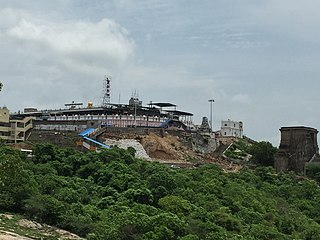
Tiruttani is a historic temple town situated in the Tiruvallur district and serves as a suburb of Chennai within the Chennai Metropolitan Area in the southern Indian state of Tamil Nadu. The town is famous for the Tiruttani Murugan Temple, an ancient Hindu temple dedicated to Kartikeya, also known as Murugan, the Hindu god of war. This temple is one of the Arupadaiveedu, a group of six significant abodes of Murugan. Tiruttani was officially incorporated into the Chennai Metropolitan Area in October 2022, signifying its growing importance and influence within the region..
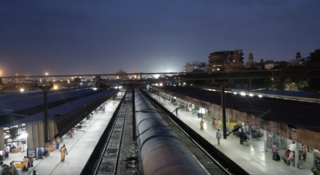
Chennai Beach is a railway terminus of the Southern Railway network in Parry's Corner, Chennai, India. Built on reclaimed land, the station serves the suburban services of the Chennai Suburban Railway and Mass Rapid Transit System (Chennai) and a few passenger trains. It serves as the northern terminus for the Chennai MRTS line. The station is named after High Court Beach, which was later built up as part of Chennai Port, and not after the Marina Beach, which is located a few kilometres away and is served by Chepauk, Triplicane and Lighthouse stations of the MRTS line. The station consists of 1500 square metres of open parking area.
The Government College of Fine Arts in Chennai is the oldest art institution in India. The institution was established in 1850 by surgeon Alexander Hunter as a private art school. In 1852, after being taken over by the government, it was renamed as the Government School of Industrial Arts. In 1962, it was renamed as the Government School of Arts and Crafts and the Government College of Arts and Crafts, before finally being renamed as present.

There have been at least four lighthouses named Chennai Lighthouse or Madras Lighthouse, which face the Bay of Bengal on the east coast of the Indian Subcontinent in Chennai, India.

Edward Elliot's Beach, simply called as Elliot's Beach and popularly known as Besant Nagar Beach or the Bessie, is a natural urban beach located in the Besant Nagar neighbourhood of Chennai, Tamil Nadu, India. It is located next to the southern tip of the Marina Beach, and was named after Edward Elliot, a chief magistrate and superintendent of police of the Madras Presidency in colonial India. It has the Shrine of Our Lady of Good Health—also known as Annai Vailankanni Church—on its shore, and the Ashtalakshmi Temple nearby.

Central Leather Research Institute or CLRI is the world's largest leather research institute in terms of research papers and patents. The institute located in Chennai, Tamil Nadu was founded on 24 April 1948 as a constituent laboratory under the Council of Scientific and Industrial Research.

The statue of Thomas Munro is an equestrian statue of Thomas Munro, 1st Baronet, Major-General in the British Army and Governor of Madras from 1820 to 1827, located in the city of Chennai, India. The bronze statue sculpted by Francis Chantrey in the United Kingdom in 1834 and shipped to Madras in 1839, is one of the popular landmarks in Chennai. The absence of stirrups is one of the peculiarities of the statue and for this reason, it is also referred to as "The Stirrupless Majesty".

Queen Mary's College is a government-run college in Chennai, India. Established in 1914, it is the first women's college in the city and the third oldest women's college in India and second oldest in South India after Sarah Tucker College. The college is located on junction of Kamarajar Salai and Dr. Radhakrishnan Salai facing the Marina Beach.
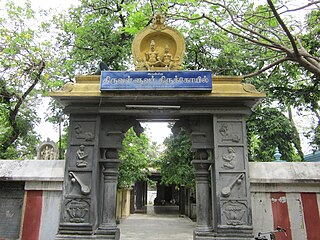
The Ekambareswarar–Kamakshi Temple, commonly known as the Thiruvalluvar Temple, is a Hindu temple dedicated to the poet-saint Valluvar in the neighborhood of Mylapore in Chennai, India. The shrine is located within the Ekambareswarar temple complex. Believed to have been constructed in the early 16th century, the temple was extensively renovated in the 1970s. Traditionally believed to be the birthplace of Saint Valluvar, the temple is the oldest ever built to Valluvar. The temple also serves as the venue for meetings of Tamil language enthusiasts and conducting Kural classes. While many consider the temple as the birthplace of Valluvar, some additionally consider it as his samadhi.

Dr. Annie Besant Park is an urban park at Chennai, India. Technically a traffic island, it gained prominence due to its location at the Marina Beach.
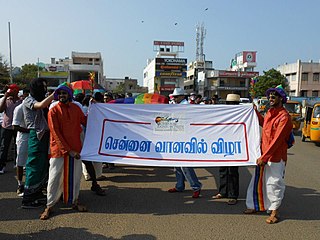
The Chennai Rainbow Pride March has been held by members of Tamil Nadu LGBTIQA+ communities every June since 2009. The pride march is organised under the banner Tamil Nadu Rainbow Coalition, which is a collective of LGBT individuals, supporters, and organizations working on human rights and healthcare for the LGBTQIA community. The Pride March occurs on the final Sunday of June every year. The Pride March is usually preceded by a month-long series of events organized by NGOs and organizations to inculcate awareness and support for the LGBTQ community, such as panel discussions, film screenings, and cultural performances. The Chennai Vaanavil Suyamariyadhai Perani a.k.a. Chennai Rainbow Self-Respect March is known for being inter-sectional in nature as it addresses issues with multiple axes such as caste, class, religion coupled with gender discrimination.
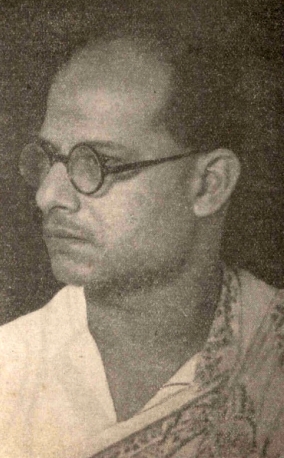
Devi Prasad Roy Choudhury was an Indian sculptor, painter and educator. He is well known for his monumental bronze sculptures, especially the Triumph of Labour and the Martyrs' Memorial, and is rated by many as one among the major artists of Indian modern art. He worked in a broad spectrum of mediums including watercolors, expressionist landscapes and commissioned portraits. Large scale sculptures were his particular strength and he made social realism the cornerstone of his art. In addition to painting and sculpting, he also wrestled, played the flute, engaged in hunting and wrote short stories in his spare time.
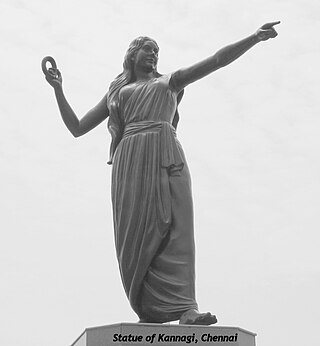
Kannagi statue is a statue at the Marina Beach, Chennai, India. It is located at the intersection of Bharathi Salai and Kamarajar promenade. On 2 January 1968, it was erected as Kannagi holding an anklet in her hand and demanding justice.

The High Court of Judicature at Madras is a High Court located in Chennai, India. It has appellate jurisdiction over the state of Tamil Nadu and the union territory of Puducherry. It is one of the oldest high courts of India along with Calcutta High Court in Kolkata and Bombay High Court in Mumbai. The Madras High Court is one of four charter high courts of colonial India established in the four Presidency Towns of Madras, Bombay, Allahabad and Calcutta by letters patent granted by Queen Victoria, dated 26 June 1862. It exercises original jurisdiction over the city of Chennai, as well as extraordinary original jurisdiction, civil and criminal, under the letters patent and special original jurisdiction for the issue of writs under the Constitution of India. Covering 107 acres, the court complex is one of the largest in the world, second only to the Supreme Court of the United Kingdom. The four-storey administrative building serves hundreds of litigants every day.

Chowdhary Satyanarayana Patnaik, commonly known as C. S. N. Patnaik, was an Indian sculptor and painter from the state of Andhra Pradesh. He specialized in fresco and mural painting and bronze sculpting. His paintings incorporated depictions of rural life and its tradition and culture. He sculpted a statue of Mahatma Gandhi which was installed at the Telangana Legislative Assembly. He received the Kala Ratna award in 2006.
K. Bashyam, also known by his pen name Arya was an Indian freedom fighter and artist who participated in the Indian independence movement and later contributed to the field of art.


















